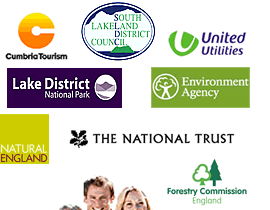Restoring Lake Catchments for Ecosystem Rehabilitation
Introduction
Lake catchments are crucial components of our natural ecosystems, playing a significant role in maintaining their health and balance. As we witness the alarming degradation of these catchments and their adverse effects on entire ecosystems, the importance of ecosystem rehabilitation becomes increasingly evident. In this article, we will delve into the definition and significance of lake catchments, explore their role in ecosystem rehabilitation, discuss the benefits of restoring them, and highlight successful restoration projects. By understanding the process and engaging stakeholders, we can pave the way for a brighter future for our lakes and the ecosystems they support. For a broader analysis of all processes, it is recommended to buy dissertation abstract via https://essayswriters.com/buy-an-abstract-for-dissertation-online.html on the relevant topic.
I. Understanding Lake Catchments
Lake catchments refer to the surrounding areas that drain into a lake, including the land, rivers, streams, and wetlands. They act as natural filters, regulating the flow of water, nutrients, and sediments into the lake. These catchments play a critical role in maintaining the ecological balance by controlling water quality, supporting diverse habitats, and sustaining aquatic life. Unfortunately, various factors contribute to the degradation of lake catchments, including urbanization, agricultural practices, and industrial pollution.
II. The Importance of Ecosystem Rehabilitation
Ecosystem degradation has far-reaching consequences, impacting not only the health of lakes but also the surrounding terrestrial and aquatic ecosystems. By addressing the restoration of lake catchments, we can improve water quality, enhance biodiversity, and promote overall ecosystem health. Restoring lake catchments has multiple benefits, such as mitigating flooding, replenishing groundwater resources, and supporting the recovery of native species. It also contributes to climate change resilience and provides recreational opportunities for communities.
III. The Process of Restoring Lake Catchments
Restoring lake catchments is a complex and interdisciplinary process that involves several steps. Initially, a thorough assessment and analysis of the health of the catchment area is conducted to identify specific issues and sources of pollution. Effective restoration requires addressing and mitigating these pollution sources through the implementation of best management practices for land use, such as erosion control measures and responsible agricultural practices. Additionally, restoring vegetation and wetlands within catchment areas helps enhance water quality, reduce sedimentation, and provide habitats for wildlife.
IV. Case Studies: Successful Lake Catchment Restoration Projects
Studying successful restoration projects can provide valuable information and inspiration.
Example 1. The Lake Okeechobee restoration project in Florida was a great success. The lake suffered from waste pollution, loss of water pool and aquatic plants. By removing waste, restoring the shoreline and propagating beneficial plants, it was possible to restore the lake's ecosystem and improve water quality.
Example 2. One of the largest lake restoration projects was the restoration of Lake Ontario. For decades, the lake has suffered from waste pollution and declining water levels. With the help of comprehensive measures, such as sewage treatment, control over emissions of pollutants and installation of sluices to regulate the water level, it was possible to restore the ecological balance of the lake.
By implementing strategies such as riparian buffer zones, stormwater management, and community education programs, these projects have achieved notable improvements in water quality, biodiversity, and overall ecosystem health.
V. Collaborative Efforts: Engaging Stakeholders
The active involvement of local communities, researchers, policy makers, and educators is vital for successful lake catchment restoration. Engaging stakeholders fosters a sense of ownership, promotes knowledge exchange, and ensures the long-term sustainability of restoration efforts. Building partnerships and collaborations among these stakeholders can combine expertise, resources, and public support. Additionally, engaging educational institutions and educators in awareness and action plays a crucial role in cultivating future generations of environmental stewards.
VI. Overcoming Challenges and Future Directions
Implementing lake catchment restoration projects may face challenges such as limited funding, conflicting interests, and policy gaps. Addressing these challenges requires robust policy and governance frameworks that prioritize ecosystem rehabilitation. Furthermore, ongoing research and technological advancements can provide innovative solutions for sustainable restoration practices. By harnessing the power of science, technology, and collaboration, we can overcome obstacles and ensure the future success of lake catchment restoration.
Conclusion
Restoring lake catchments is not only essential for the health and balance of our ecosystems but also for the well-being of communities that depend on them. By focusing on the rehabilitation of these vital components, we can create a positive ripple effect that extends beyond the lakes themselves. It is our collective responsibility to support restoration efforts through advocacy, participation, and sustainable practices. Together, we can ensure a brighter future for our lakes, their catchments, and the ecosystems they sustain.
|

